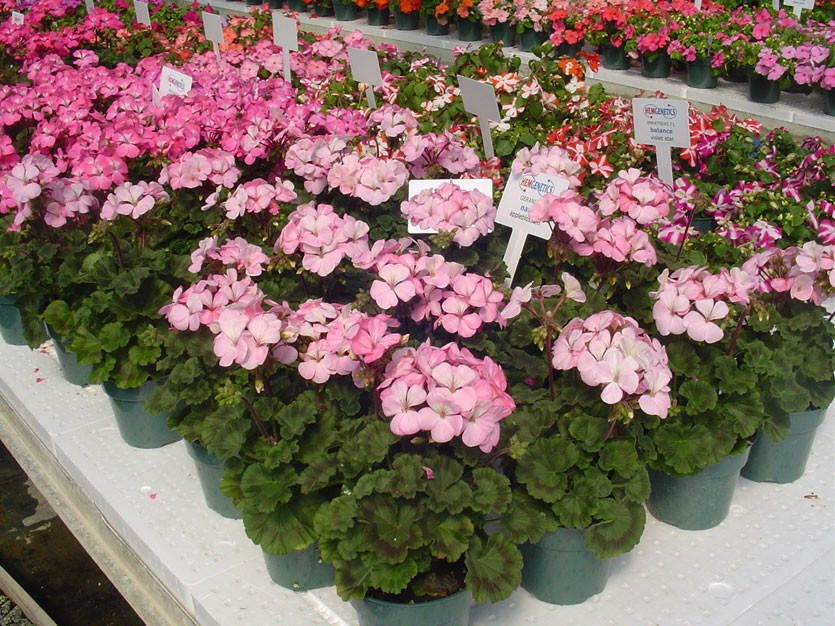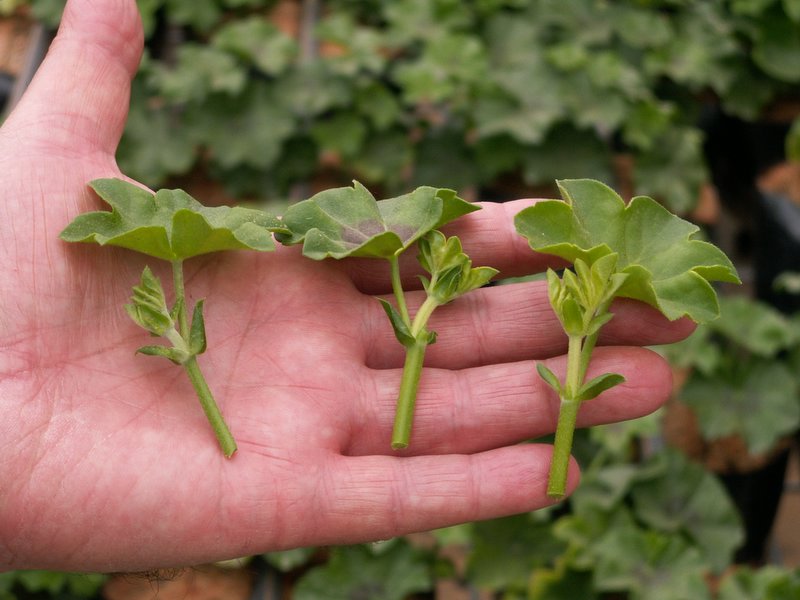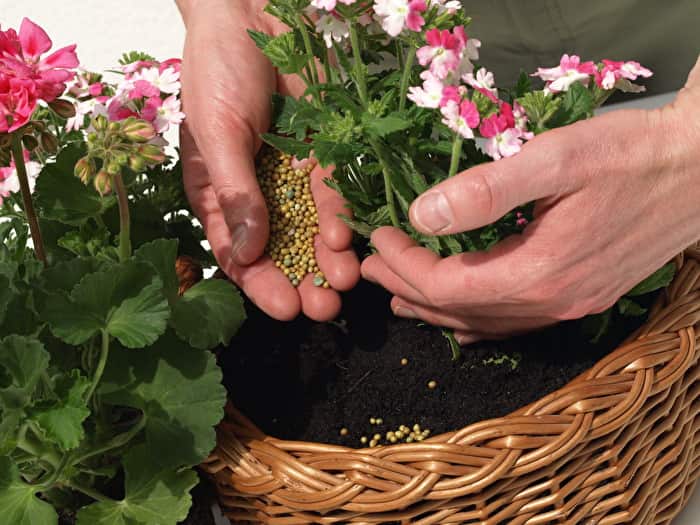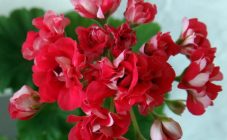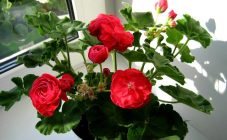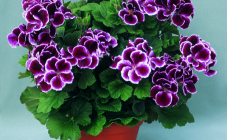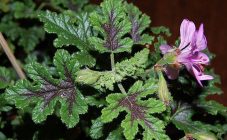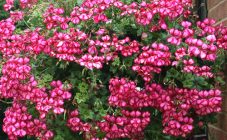Content:
Not only to decorate a room or a garden bed, but also to benefit the environment and the human body, a plant such as zonal pelargonium helps. Nowadays, this species is distributed across all continents and countries.
The plant and its features
One of the most popular and attractive types of flowering plants should rightly be called
... Today there are more than 280 varieties of this plant. It grows wild mainly in different parts of South Africa. The most famous variety is zonal pelargonium, or in other words garden pelargonium. This plant is a hybrid. The process of its creation was long, because more than 200 species had to be crossed to get a flower.
Zonal pelargonium is a perennial plant, but in the regions of Russia it is used in flower beds as an annual. At home, the flower can grow for several years in a row.
As a rule, pelargonium grows to a height of 20-30 cm, but there are also varieties up to 1.5 m.
The stalk of pelargonium is in most cases straight, however, creeping variants can also be found. Leaflets are simple, serrate or dissected serrate. Umbellate inflorescences, contain a large number of small flowers. The lush flower of pelargonium can have a wide variety of colors, including purple, raspberry, orange, white or red.
The undoubted advantage of the plant is that it is able to cleanse the air from harmful microorganisms. It is often used in traditional medicine. Pelargonium leaves accelerate wound healing and have a calming effect when added to tea. Geranium oil is squeezed out of the stems, the roots themselves and extracts from it become components of medicines.
TOP of the best varieties of flowers
Talking about zonal pelargonium, it is also worth mentioning its best varieties:
- Pink (or double) grade. As the name suggests, the flower looks like a rose. As a rule, large flowers are pink in color. They are distinguished by drought resistance. Used for landscaping.
- Tulip-like... This varietal species is distinguished by its very abundant flowering. It was bred in the second half of the 20th century and almost immediately became one of the most popular flower beds in Europe.
- Cactus... A particularly interesting plant. Among others, it stands out for its twisted inflorescences. The varietal species has flowers longer than other geraniums. The flower bush looks rather shaggy from the outside, similar to a cactus flower.
- Deacon. Very good and flavorful variety. Has flowers of pink, orange or red. The flowers themselves are small in size, but very tightly collected in neat small inflorescences.
- Star-shaped... It was developed as a separate variety in the second half of the 20th century. The flowers of the plant are white, have elongated and sharp edges (hence the name of the plant).
Reproduction specifics
The undoubted advantage of the plant is that it can be propagated both by seeds and cuttings. The first method is considered simpler and provides greater germination.
Seed propagation
The seeds of the plant are characterized by a hard shell. If you buy them in a store in the form of pills, then no additional processing is needed.If the reproduction of the flower occurs by seeds that were independently collected by the gardener, then it is better to carry out scarification. A step-by-step briefing of such a process involves the following actions:
- rub all the seeds with sandpaper;
- place the grains in warm water for 3-4 hours;
- dry with a napkin.
Another variant of scarification offers alternate rinsing of the grains with either warm or cold water (3-4 times). Then leave the seeds in warm water for 24 hours.
Sowing the plant is best done between December and March. Winter is not terrible for a plant if you plant it in a greenhouse. The late planting period is April.
It is better to place the grains in a substrate consisting of: sand, peat and vermiculite. You can also add sod land to this composition or use peat tablets.
On the eve of sowing, the base must be moistened.
Having tamped the substrate well into the boxes, carefully lay out the seeds and cover them with the same substrate on top. After sowing, the seeds are again lightly watered with water from a spray bottle. From above, the boxes must be covered with plastic wrap. Airing is done for them once a day.
For a good harvest, it is worth watering the seedlings of pelargonium daily. When at least 1 pair of leaves appears on the plant, you can pick the seedlings.
Before planting zonal pelargonium in open ground, you need to harden it: take boxes with plants outside for at least 2 hours a day. Hardening should take place within 14 days.
Propagation by cuttings
For reproduction of pelargonium by cuttings, the period from January to April is most suitable. It is better to prune cuttings from each healthy plant.
Better to give preference to the upper branches. As the experience of many gardeners shows, the tops germinate much better.
The sections should dry well, so the sections should be held for 2-3 hours in the fresh air (but in the shade).
For rooting, the owner has the opportunity to choose one of the environment options:
- water;
- substrate of sand, vermiculite and peat.
For planting cuttings, you should choose a bright and warm place. During planting, just like seeds, cuttings must be disinfected with a solution of potassium permanganate or special ready-made solutions.
The rooting process lasts about 3 weeks, but provided that the temperature in the room is 20-24 degrees Celsius. The plant can be transplanted to a permanent place in a garden or flower bed in May.
Agrotechnics
How to plant
Pelargonium Zonal is a versatile ornamental plant. It can be kept in a pot at home, as well as used for arranging flower beds, concrete and stone curbs, balcony boxes, portable containers, and the like.
On the street, the plant is planted already as seedlings. The latter, in turn, is obtained by propagating pelargonium by seeds or cuttings.
When choosing a place for a plant, do not forget that this geranium loves warm and sunny light areas. Penumbra and shade negatively affect the flower, its appearance changes significantly. Nutritious, loose soils with neutral acidity are ideal. It will be better to germinate a plant if the soil is previously fertilized with phosphorus, nitrogen and potassium.
The landing site of pelargonium must be dug well in advance to a depth of at least 25-30 cm. It is better to break up large lumps, level the site itself.
When planting ready-made seedlings in the ground, the gardener should make sure that the optimal distance between the bushes is maintained - 20-25 cm, depending on how wide the variety will be.
In order for a young flower bush to have additional roots, the seedlings are placed about 2-3 cm deeper than they grew before.
Care
Although zonal pelargonium is considered relatively unpretentious, it also needs home care. The owner will have to perform three main actions: watering, feeding, pruning.
Pouring
Pelargonium zonal refers to drought-resistant plants. Adult flowers do not require a lot of moisture; you need to take more care of young plants during the growing season. Watering is necessary as soon as the soil becomes dry 2-3 cm down. From a spray bottle, you can spray the leaves with fresh water every other day.
Top dressing
Both indoor and garden versions of the plant require feeding. Most of all, the plant needs potassium and nitrogen (the latter element needs a little less than potassium). You need to add nutrients to the flower under the root, and also apply dressing to the leaves.
For flowers growing in hanging containers, the optimal frequency of pouring is once a week.
For plants that are planted in gardens and flower beds, the optimal feeding frequency is 10-12 days.
Pruning inflorescences
In order for the flower bush to delight longer with its beautiful appearance, it must be cut from time to time. First of all, weak, dried flowers and leaves are removed. For prophylactic purposes, inflorescences should be pruned in cold and damp weather. Otherwise, the flowers begin to ache on damp rot. This disease spreads, as a rule, from inflorescences to shoots and roots.
Pelargonium zonal is a popular unpretentious and at the same time incredibly beautiful plant. It easily withstands frost and drought. Even a novice gardener can cope with caring for such a plant. Having provided the flower with the necessary conditions, it will be possible to enjoy its beauty for several seasons in a row.
